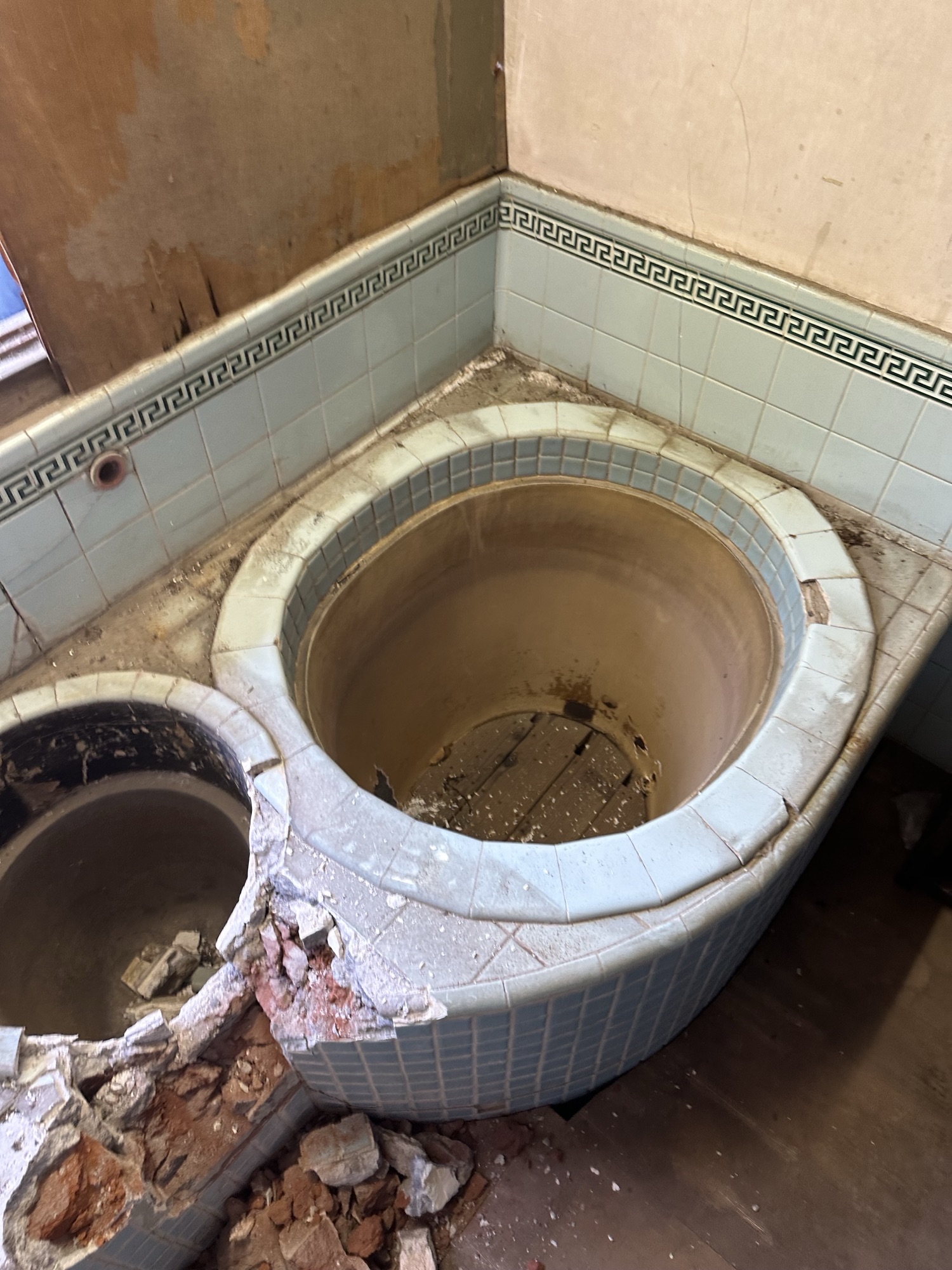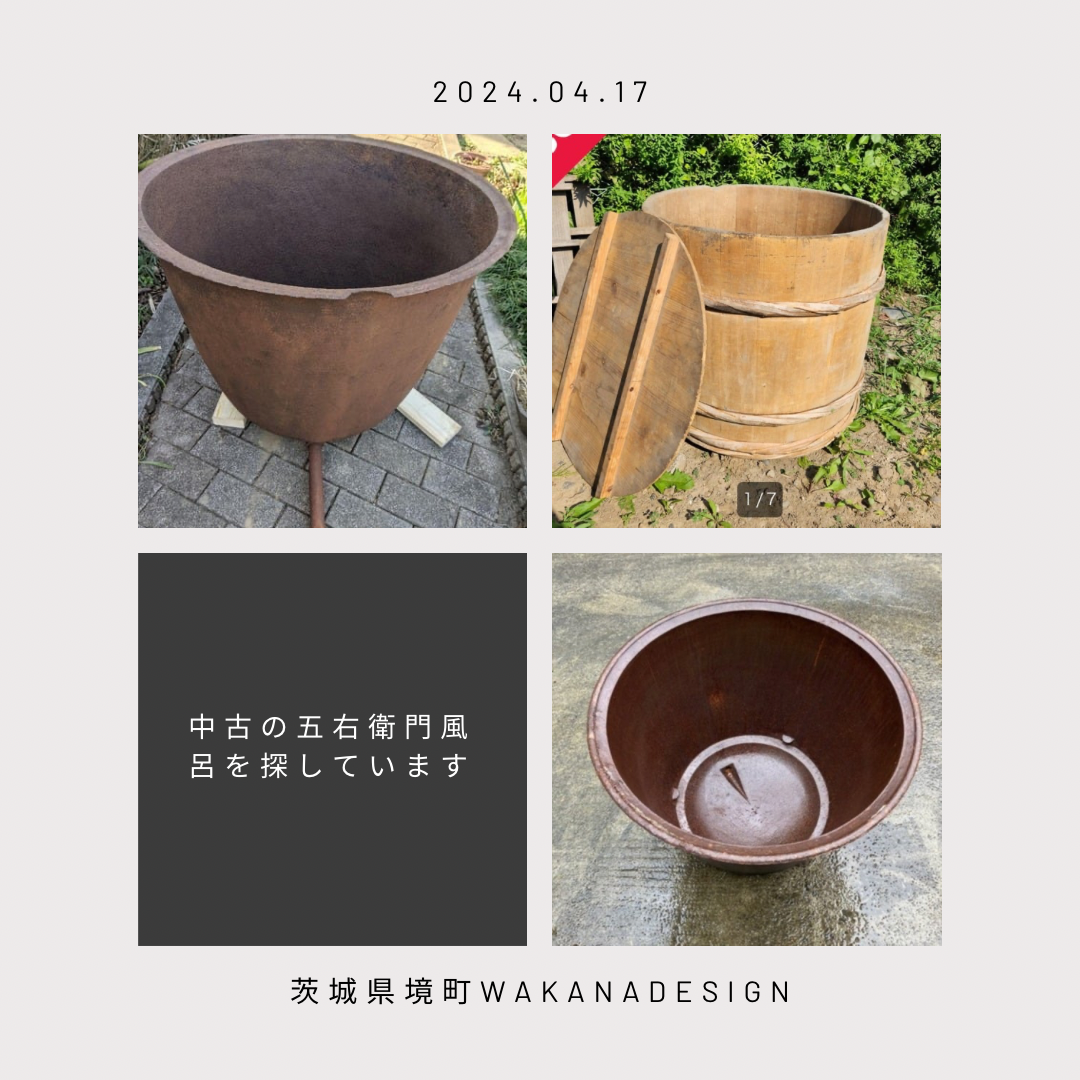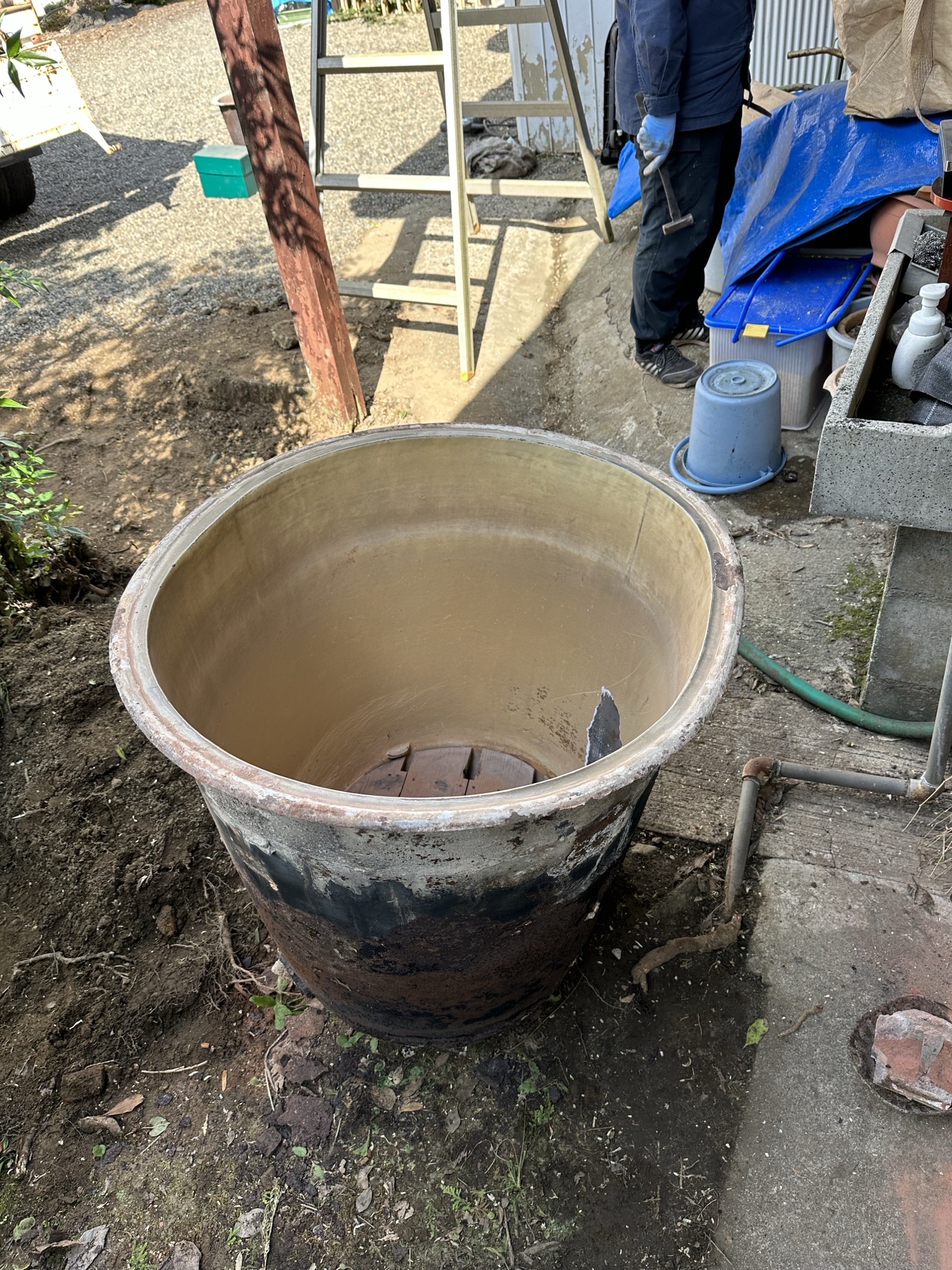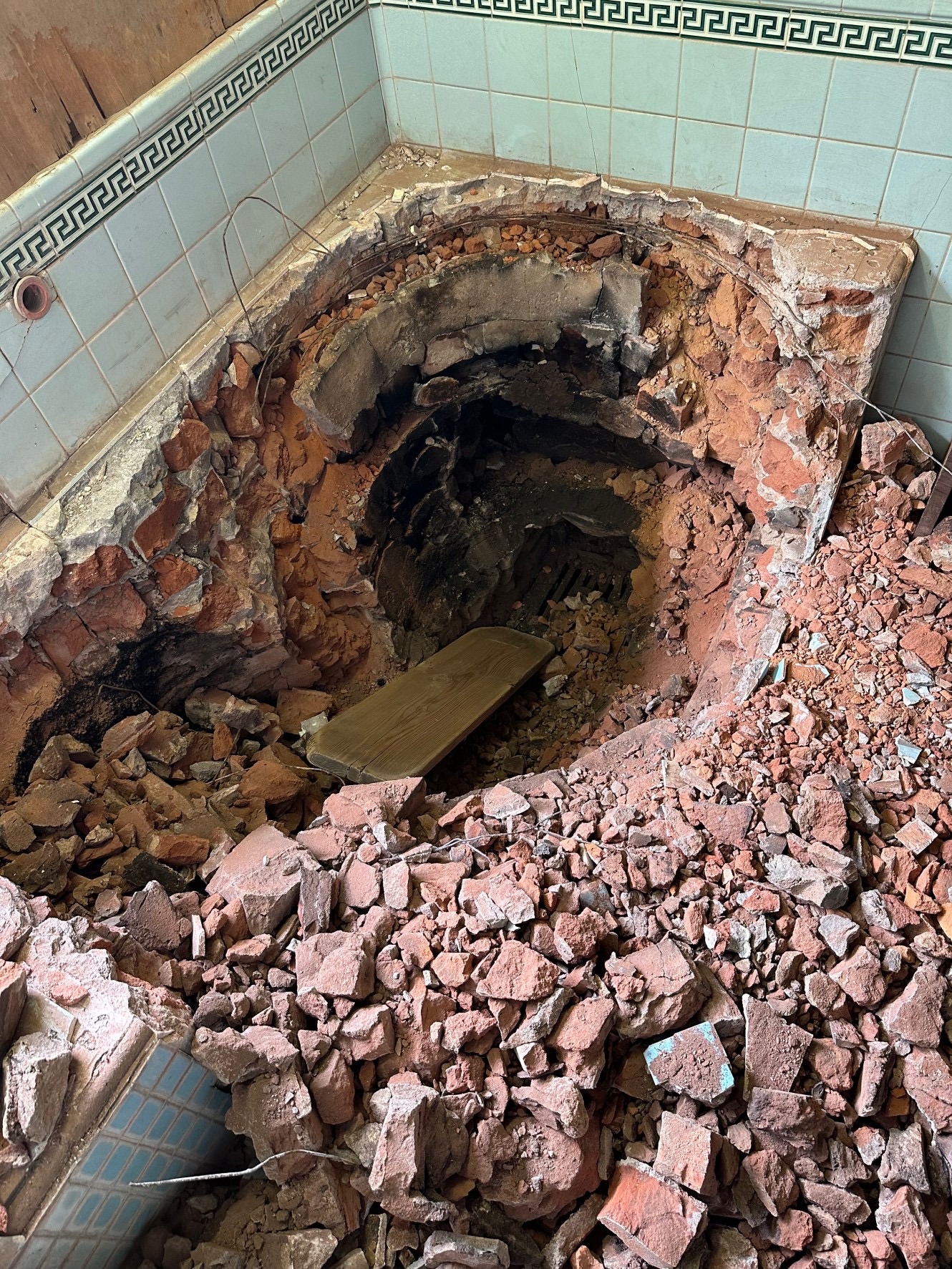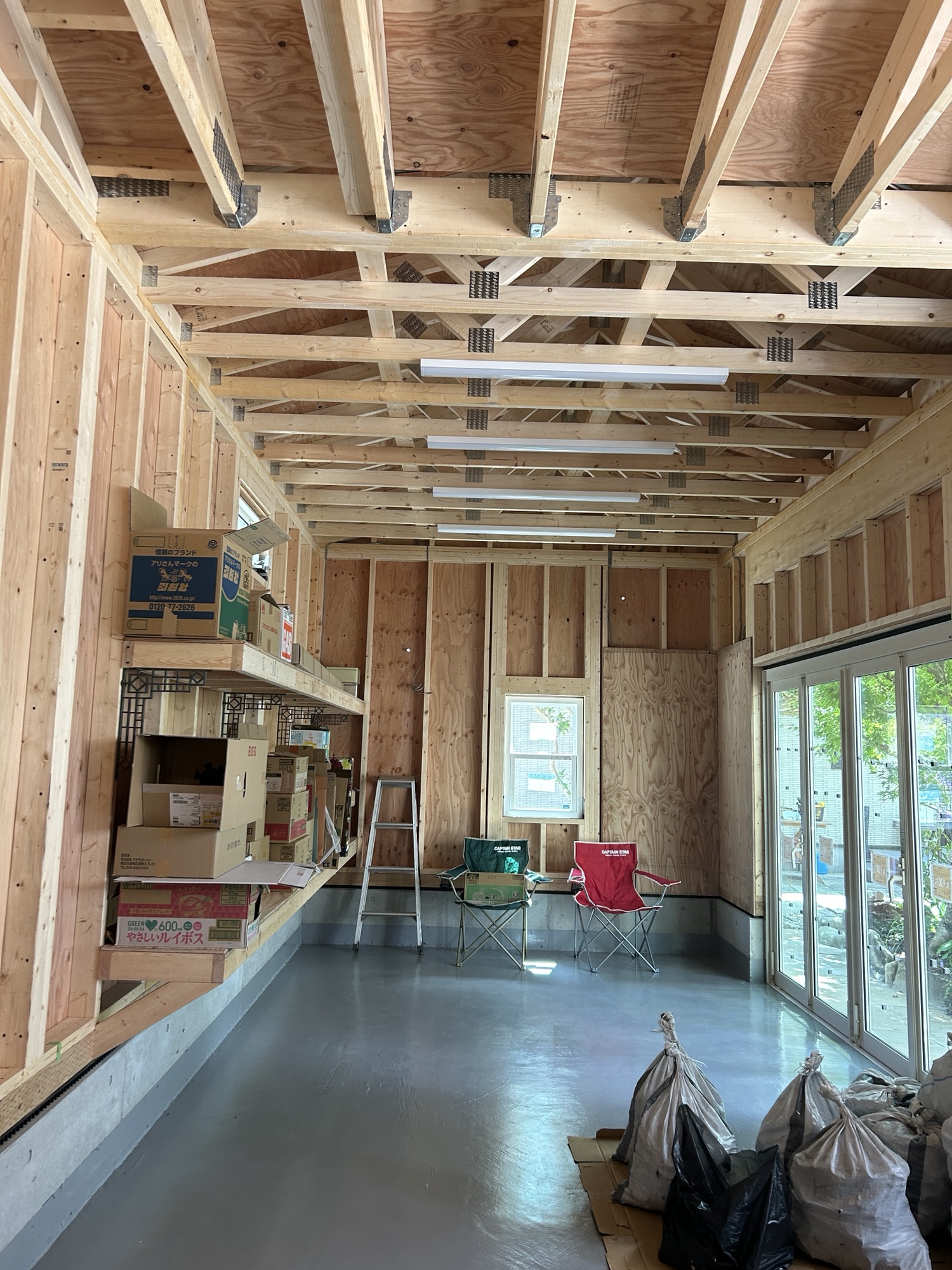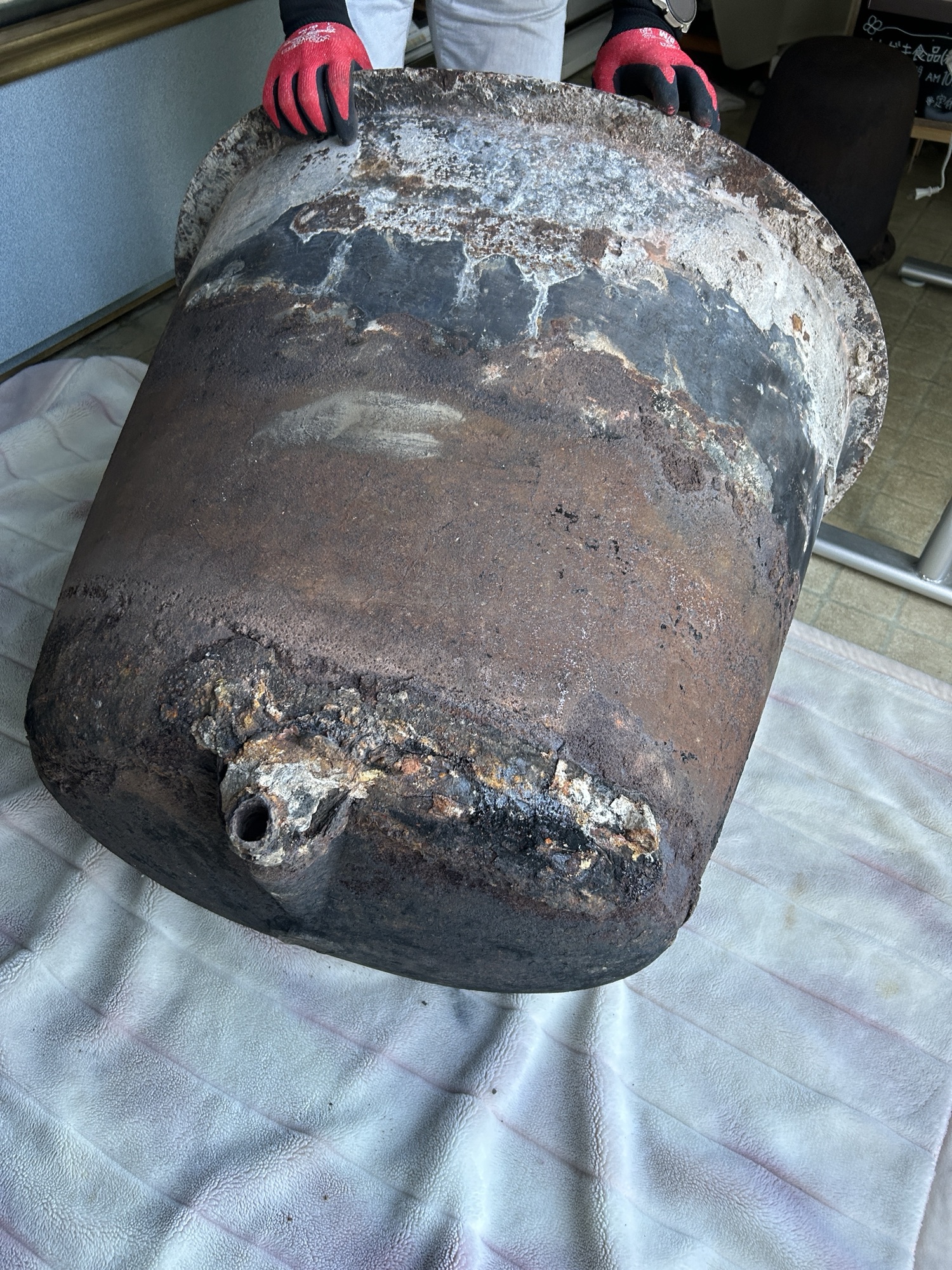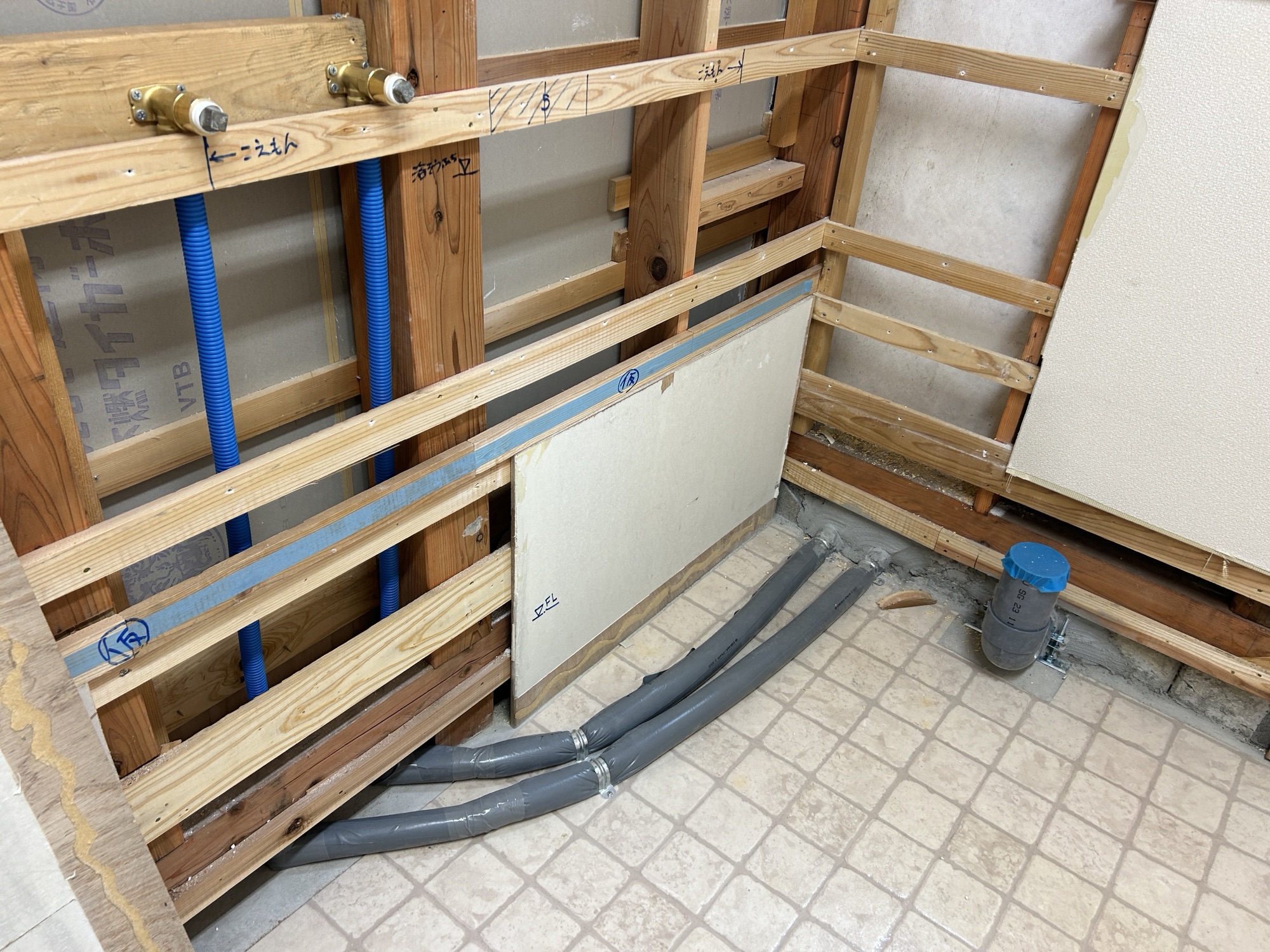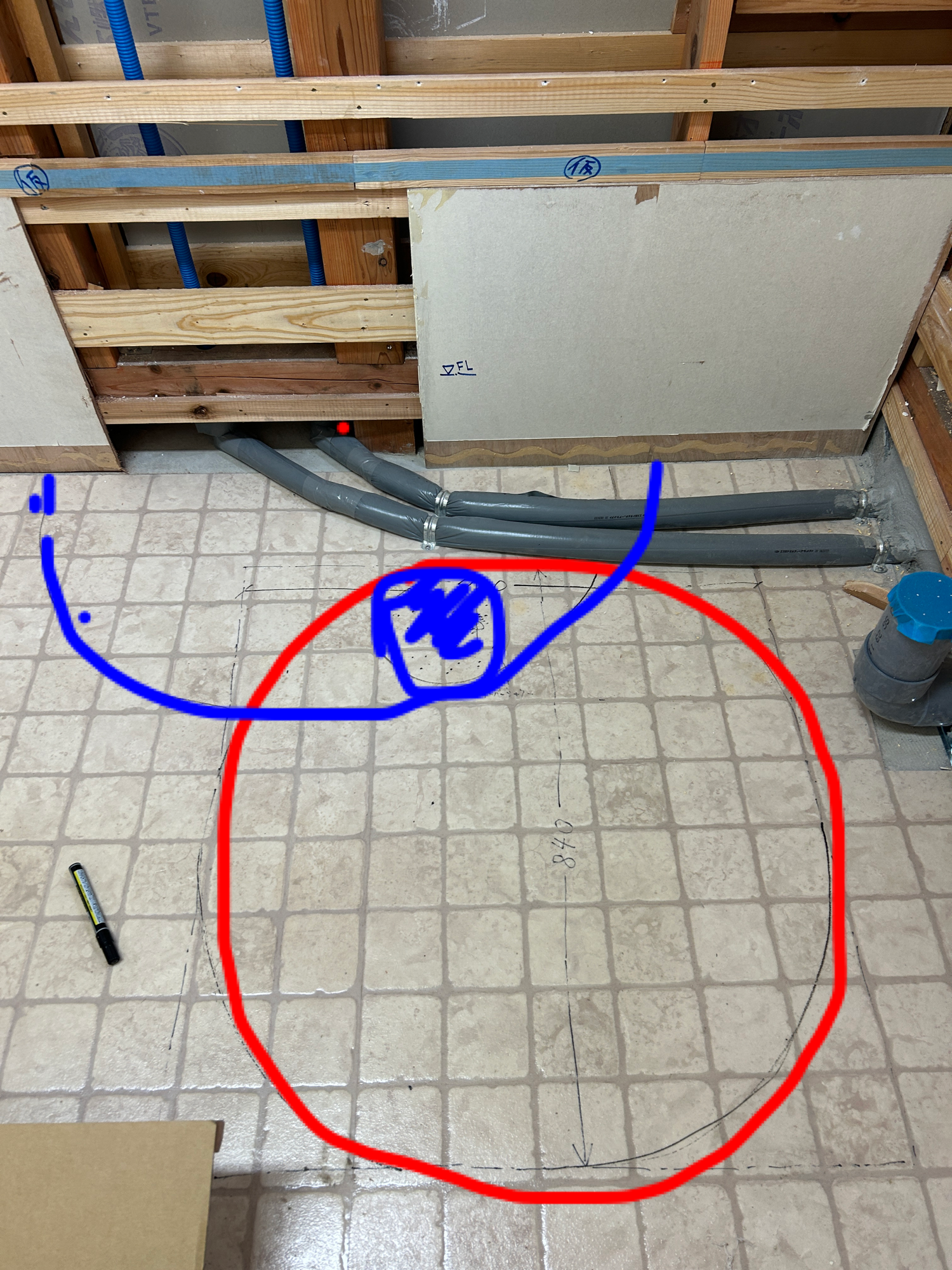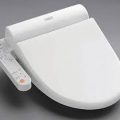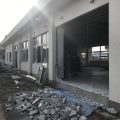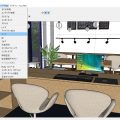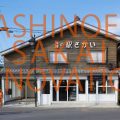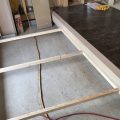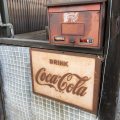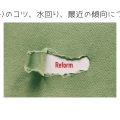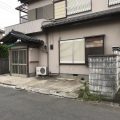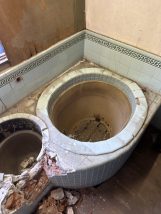
「五右衛門風呂を民泊のバスタブに!」そんなアイデアがふと頭に浮かびました。しかし、実際に五右衛門風呂を手に入れるにはどうしたらいいか?そこで、建築仲間に相談してみたところ、「君津市に最近撤去した五右衛門風呂が倉庫に眠っているよ」との情報をいただいた。早速足を運び、その五右衛門風呂は、歴史を感じさせる風合いがあり、これを民泊に取り入れることで他にはない特別な体験を提供できると確信しました。
この記事では、発想の段階から五右衛門風呂を設置し、民泊として完成させるまでの一連のプロセスを詳しくご紹介します。初期費用を抑えながらも、魅力的でユニークな宿泊施設を作り上げるためのアイデアと工夫が詰まった内容になるはずです。なかなか他では見られない事例だと思いますので、ぜひ続きをご覧いただければと思います。
Turning a Goemonburo into a Bathtub for a Guesthouse! This idea suddenly popped into my head. But how could I actually get my hands on a Goemonburo? So, I consulted with my architect friends, and they informed me, “There’s a recently removed Goemonburo stored in a warehouse in Kimitsu City.” I quickly went to see it. The Goemonburo had a texture that exuded history, and I was convinced that incorporating it into a guesthouse would offer a unique experience unlike any other.
In this article, we will detail the entire process of installing a Goemonburo, from the initial idea to the completion of a guesthouse. It will be filled with ideas and ingenuity to create an attractive and unique accommodation while keeping initial costs low. This is a rare example that you won’t see often elsewhere, so please continue reading to see how it unfolds.
五右衛門風呂とは?
What is a Goemonburo?
五右衛門風呂は、金属製の大きな釜を使った伝統的な日本のお風呂です。その名の由来は、戦国時代の盗賊、石川五右衛門が処刑されたときに使われたという説があります。風呂の底に木製製の板が敷かれており、直接火にかけてお湯を沸かします。この独特の風呂は、薪でお湯を沸かすため、自然との調和を感じることができ、現代の風呂では味わえない特別な入浴体験を提供します。
五右衛門風呂は、昭和30年代(1955年~1965年)頃まで日本の家庭で広く使われていました。その後、より便利なガスや電気で温める風呂に取って代わられましたが、現在でもその風情と独特な入浴体験を楽しむために一部の旅館や民宿で使われ続けています。
昭和30年代ということは、今から約70年前です。そう考えると、未だに五右衛門風呂が残っていること自体が驚きです。古いものを大切にし、現代に受け継ぐことの素晴らしさを感じます。私も実際に現物を見るまでは、五右衛門風呂を想像するのが少し難しかったのですが、さて、どんなものだったのでしょうか!
A Goemonburo is a traditional Japanese bath that uses a large metal cauldron. Its name is said to originate from the story of the Sengoku-era thief, Ishikawa Goemon, who was executed in such a cauldron. Wooden planks are placed at the bottom of the bath to prevent the bather from being burned, and the water is heated directly over a fire. This unique bath, heated with firewood, allows you to feel in harmony with nature and provides a special bathing experience that modern baths cannot offer.
Goemonburo was widely used in Japanese households until around the 1950s and 1960s. After that, it was replaced by more convenient gas or electric heated baths. However, some ryokan (Japanese inns) and minshuku (Japanese guesthouses) still use Goemonburo to offer guests the nostalgic and unique bathing experience.
Considering that the 1950s and 1960s are about 70 years ago, it is surprising that Goemonburo still exists today. It is wonderful to see how old traditions are preserved and passed down to the present day. Before seeing one in person, it was a bit difficult for me to imagine what a Goemonburo was like. So, what exactly is it like?
五右衛門風呂を探す旅:SNSと知り合いの力を借りて
A Journey to Find a Goemonburo: Leveraging the Power of Social Media and Friends
五右衛門風呂を民泊のバスタブに使うというアイデアが浮かんだものの、実際にどこで手に入れるかが問題でした。ここでは、私がどのようにして五右衛門風呂を探し出したか、SNSと知り合いの力を最大限に活用した方法についてご紹介します。
SNSでの情報収集
Gathering Information through Social Media
まず、SNSを活用することにしました。TwitterやFacebookなどのプラットフォームで「五右衛門風呂」「古いお風呂」などのキーワードで検索をかけました。さらに、自分自身のアカウントで「五右衛門風呂を探しています。どなたかご存知の方いませんか?」という投稿をしました。
First, I decided to leverage social media. I searched for keywords like “Goemonburo” and “old bath” on platforms such as Twitter and Facebook. Additionally, I posted on my own account, saying, “I am looking for a Goemonburo. Does anyone know where I can find one?”
建築仲間や知り合いに声をかける
Reaching Out to Architect Friends and Acquaintances
次に、直接の知り合いにも声をかけてみました。すると、LINE送付後5分足らずで建築仲間のある方から「君津市に最近撤去した五右衛門風呂が倉庫に眠っているよ」という情報を得ることができました。しかも撤去時の写真も送ってくださいました。
Next, I reached out to my direct acquaintances. Within less than five minutes of sending a message on LINE, one of my architect friends responded with information, saying, “There’s a recently removed Goemonburo stored in a warehouse in Kimitsu City.” They even sent me photos from the time of its removal.
こちらが五右衛門風呂を解体している画像
Here are the images of the Goemonburo being dismantled.
私自身も五右衛門風呂と言っても実際に現物を見たことはありませんので、写真を見せていただいて、すごい!五右衛門風呂ってこんな感じなんだという驚きとワクワクを持ちました。
ちなみに左にある小さな窯は、熱すぎたときに水を入れて調整するための窯だそうです。
I had never seen a Goemonburo in person myself, so when I was shown the photos, I was amazed! I felt a sense of excitement and wonder, thinking, “So this is what a Goemonburo looks like.”
By the way, the small cauldron on the left is apparently used to add water to adjust the temperature when it gets too hot.
奇麗な状態で取り出してありますよね。当時、解体にも気を遣われたのではないでしょうか。床底に木の板が入っていますね。
It has been removed in excellent condition, hasn’t it? They must have taken great care during the dismantling process. I see there are wooden planks at the bottom of the cauldron.
レンガのような焼き物に埋まっているという印象。直火に堪えないといけないため物理的にもこうなりますよね。理にかなっていますよね、なるほど・・・。
It seems to be embedded in ceramic-like bricks. It makes sense physically, as it needs to withstand direct fire. Indeed, it’s quite logical.
君津市久留里へ五右衛門風呂を取りに
Going to Kururi in Kimitsu City to Retrieve the Goemonburo
千葉県君津市の久留里にあるこちらのお宅は、昔からお城に仕えた家系の方が住まわれており、歴史と由緒のあるお宅です。先日、このお宅でガレージをツーバイフォー工法で建設する際に、図面の作成をお手伝いさせていただきました。ある方が間を取り持ってくださり、このご縁をいただくことができました。
このガレージはトラスが表しになっており、とても良い雰囲気を醸し出しています。久留里のお宅には、最近まで五右衛門風呂がありましたが、撤去されて倉庫に保管されています。その五右衛門風呂を取りに、茨城県境町から関係者一同で伺った次第です。
久留里の銘水は、江戸時代から水質の良さで知られ、将軍家にも献上されていた歴史があります。この地域の地質と自然環境が良質な地下水を育み、現代でも多くの人々に愛されています。また、環境省が選定する「名水百選」にも選ばれ、その品質の高さが公認されています。
This house in Kururi, Kimitsu City, Chiba Prefecture, belongs to a family that has served the castle for generations, making it a historically significant and venerable residence. Recently, I assisted in drawing up the plans for constructing a garage using the two-by-four method for this house. Thanks to the introduction by a mutual acquaintance, I was able to forge this connection.
The garage has exposed trusses, creating a very pleasant atmosphere. The Kururi residence had a Goemonburo until recently, which has since been dismantled and stored in a warehouse. We visited from Sakai Town, Ibaraki Prefecture, to retrieve this Goemonburo.
Kururi’s famous water has been known for its quality since the Edo period and was even offered to the shogunate. The geology and natural environment of this region produce high-quality groundwater, which continues to be cherished by many people today. Additionally, Kururi’s water has been selected as one of the “Top 100 Famous Waters” by the Ministry of the Environment, attesting to its exceptional quality.
久留里の銘水は、古くから水質の良さで知られており、江戸時代には将軍家にも献上されていた歴史があります。この地域の地質と自然環境が、豊富なミネラルを含んだ良質な地下水を育み、現代でも多くの人々に愛されています。また、環境省が選定する「名水百選」にも選ばれており、その品質の高さが公認されています。今回五右衛門風呂をゆずっていただいたお役はこの銘水が流れているお宅でもあるのです。それなので、何度かこちらに伺ったのですが日常的にこの美味しい水を使っており、その素晴らしさを感じることができます。
このお宅に伺うときには、いつもこの名水を汲んで帰るのが楽しみです。この湧水でコーヒーを淹れると、とても優雅な気持ちになります。
さて、こちらで譲ってくださるご本人にお会いすることが出来て、お礼と境町ではどのように活用したいかを説明できました。いただいた五右衛門風呂は直火をするということではなく、バスタブとして使用します。という話に興味を持ってくださったので、完成後は写真を送らせていただこうと思っています。大切に斬新に使わせていただきます!!
五右衛門風呂をワンボックスワゴンで運ぶ
Transporting the Goemonburo in a Van
車に載るのかという心配をよそに、すっぽりとワンボックスに納まりました。重さは大体ですが、50キロくらいじゃないかと話していました。男の人二人で運べるくらいの感覚です。ちなみにこのお風呂は楕円形でした。この楕円形が珍しかったらしく運んでいる施主が、楕円は初めて見たということを話されていました。楕円形の方が座りやすいのではということです。
Despite our concerns about whether it would fit in the van, the Goemonburo fit perfectly inside. We estimated its weight to be around 50 kilograms. It felt like something that two men could carry. Interestingly, this bath was oval-shaped. The owner who was transporting it mentioned that it was their first time seeing an oval-shaped Goemonburo, and they speculated that the oval shape might be more comfortable for sitting.
茨城県境町の現場に搬入!
Delivered to the site in Sakai Town, Ibaraki Prefecture!
そして、水道屋さんとの課題になったのは、排水の問題です。五右衛門風呂ってどんな排水口になっているの?と聞かれても、私も水道屋さんも現物を見たことがないため、現物が届いてから考えようということになりました。このように、それぞれが工夫して対応していくことになりますが、それがすごく面白く感じています。
実際にはこんな感じの排水口でした。かなり口径が狭い。内法でいうと2センチ強ってところです。この排水口と現在の排水管を直接つなぐのは難しいため、栓を抜き排水してしまい、目皿で受けるタイプで考えています。その対応を設備屋さんが行った後の画像がこちらです。
Then came the issue of drainage, which became a challenge with the plumber. When asked, “What kind of drainage outlet does a Goemonburo have?” neither the plumber nor I knew because we had never seen one in person. We decided to figure it out once the Goemonburo arrived. It has been fascinating to see how everyone comes up with solutions.
This is what the drainage outlet looked like. The diameter is quite narrow, just over 2 centimeters in internal dimension. Since it’s difficult to connect this outlet directly to the current drainage pipes, we decided to use a method where the plug is removed to drain the water, collected by a drain cover. Here are the images after the plumber handled the installation.
排水口が一箇所あると思いますがここに集めようということで、コンクリート打ちをするとき排水勾配をここに向かって左官をしてもらいます。
さて、それでは今後も工事の進捗は報告できるように頑張ります。
We decided to direct all the water to a single drainage outlet. When pouring the concrete, we will have the mason create a slope towards this outlet.
I will do my best to continue reporting on the progress of the construction.

